The rapid rise of DC fast charging
Coupled with the rising EV adoption rates worldwide, the DC fast charging market has seen an exponential rise in recent years and is projected to keep growing to become the most profitable type of public EV charging.
That said, DC fast charging remains an unfamiliar concept for many businesses, and investing in it can seem like a risky bet. This guide will demystify DC fast charging for business, offering a comprehensive overview of the topic and providing clarity about terminology, current market trends, opportunities, and business models.
1. Current trends in the DC fast-charging market
In 2022, the number of DC fast charging stations globally rose by about 330,000, to a total fast charging station stock of 860,000 worldwide. Businesses have taken notice and sought to take advantage of this lucrative trend – fast charging is the fastest-growing electric vehicle (EV) charging market segment, accounting for over 72 percent of global EV charging revenue in 2022.
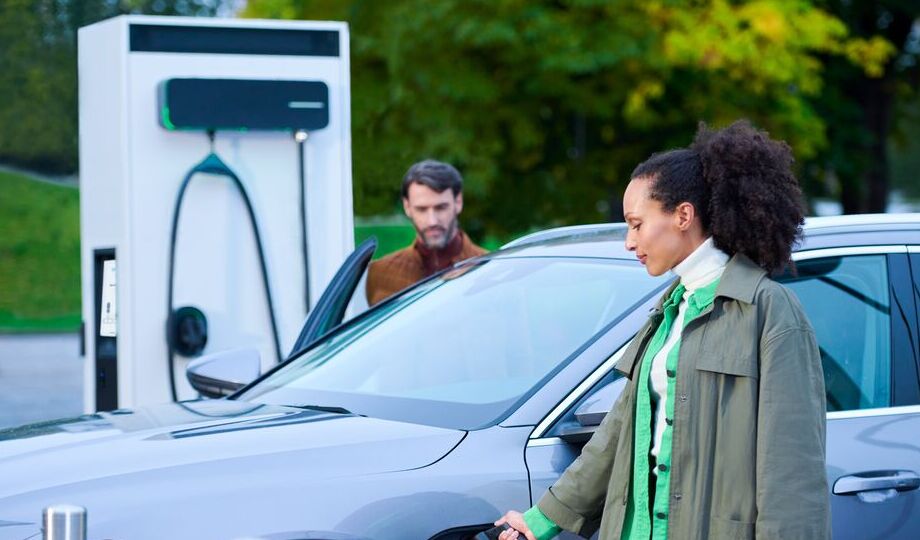
There are four key trends that shape the DC fast charging market currently:
- Increasing charging speeds driven by consumer demand are pushing EV manufacturers and charging station makers to develop more powerful, faster-charging EVs and chargers. It’s common to see DC charging stations capable of over 350 kW power output, whereas 50 kW charging was considered state-of-the-art a few years ago.
- Greater collaboration might sound counterintuitive given the race to capture the growing DC fast charging market, but the reality is that partnerships can be an effective way to drive mutually beneficial business. Think of a store or restaurant installing EV charging stations that benefit from increased traffic at their site, while the charging station operator reaps the profit from charging fees.
- Smart charging has been transforming the EV charging experience, enabling more efficient, sustainable DC fast charging. Features such as load balancing and vehicle-to-grid (V2G) can help maximize EV charging infrastructure utilization and build a resilient operation.
- Renewable energy integration is an essential consideration for companies looking to move away from their reliance on fossil fuels. Depending on the model, DC fast charging stations are capable of using energy generated onsite from solar panels, geothermal, or wind, to name a few.

At the same time, the DC fast charging market is also characterized by two main challenges:
- Setting up a grid connection for a DC fast charging installation can be a challenging process, with different rules, regulations, and stakeholders depending on your location. This can hinder building out DC fast charging infrastructure at scale, as each location has to be approached as an entirely new project.
- Interoperability and EV charging standards are emerging globally. Whereas until now, the development of EV charging has been largely fragmented, with different technologies and standards depending on the region, standards are beginning to emerge, and governments are increasingly mandating interoperability. Investing in incompatible hardware – or getting stuck with hardware that lacks upgradeability – can lead to expensive upgrades down the line.
Read more about current trends and challenges in the DC fast charging market here.
2. A closer look at DC fast charging terminology
If you’ve ever tried looking into EV charging, you might have found yourself entangled in a web of technical jargon – from AC and DC charging to different types of charging stations, CPOs, EMSPs, kilowatts… Especially for newcomers, the world of DC charging can be a confusing one.
Below, we aim to break down these concepts and explain what they stand for to help you navigate and understand the EV charging landscape.
What is DC fast charging?
You probably know that DC fast charging refers to a type of quick EV charging, but do you know what actually makes a DC fast charger? And what about the “DC” in the name?
DC fast charging, also called rapid charging or simply fast charging, refers to a type of charging that feeds much higher-powered energy directly into an EV’s battery. The DC in the name refers to direct current and is the type of electricity used to achieve quick charging times in fast charging.

In contrast to alternating current (AC), which is readily available from the grid and used in most residential and regular public charging stations, DC charging needs to convert the current from the grid into direct current, requiring significant capital investment and increasing installation costs considerably.
But the tradeoff is often worth it: whereas a regular AC charging station can charge a medium-sized EV in around 2 to 8 hours, DC charging can achieve the same in under an hour and as little as 15 minutes, depending on the station’s power output and car’s charging capacity.
What are CPOs, Charge Point Owners, and EMSPs?
The DC fast charging ecosystem has a range of stakeholders who purchase, install, operate, and maintain EV charging stations. Three main ones are charge point operators (CPOs), e-mobility service providers (EMSPs), and charge point owners.

- CPOs typically manage the day-to-day running of the charging station and are usually responsible for installing, operating, and maintaining a charging station (or network of charging stations).
- EMSPs handle the customer-facing facing section of DC fast charging. They allow drivers to use various charging stations operated by different CPOs and streamline payment via a single subscription or app.
- Charge point owners take care of the commercials and financing of DC fast charging stations, seeking profitable investment opportunities.
To read more about the differences between EV charging stakeholders, take a look at our article here.
3. Rising demand for fast charging
Coupled with the rise in EV adoption, the demand for EV charging, and especially fast charging, is skyrocketing. The global EV charging market is expected to grow at a compound annual growth rate (CAGR) of 25.5 percent until 2030, with the DC fast charging market alone expected to be worth around $220 billion in 2030.
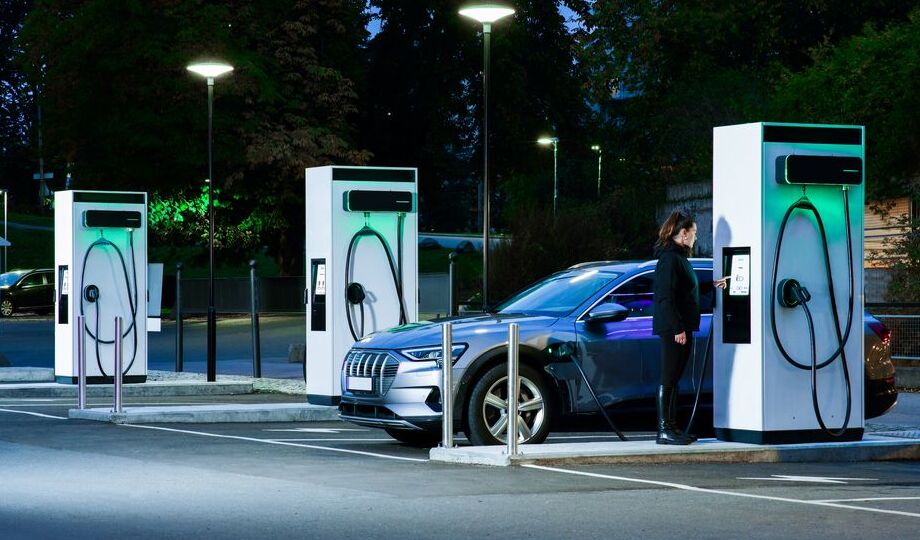
This exponential growth is driven by drivers’ willingness to pay a higher price for faster charging and the convenience it unlocks. Beyond flexibility, DC fast charging is a key tool in overcoming two of the biggest challenges of electric mobility: range anxiety and infrastructure capacity.
Range anxiety
Range anxiety refers to the fear that many potential EV drivers have of running out of battery without being able to find a place to charge. While largely unfounded, as most modern EVs have more than enough range to cover the average daily commutes across the US and Europe, it remains an important barrier to electric vehicle adoption.
DC fast charging can help overcome this fear by offering a reliable, rapid solution to dwindling range mid-trip, allowing drivers to quickly top-up with minimal disruption to their journeys.

Infrastructure capacity
This links to the second most common barrier to EV adoption: concerns about charging infrastructure availability. DC fast chargers may be effective at topping up an EV quickly, but they’re only really useful if they’re available and accessible.
Expanding DC fast charging networks is essential for a range of people who rely on them: for instance, drivers in densely populated cities without access to a home EV charging station or people who often travel long distances for work.
DC fast charging stations are versatile and can be installed in various everyday locations: stores, restaurants, hotels, gyms, parking lots, and gas stations, ensuring they easily fit into drivers’ existing routines.
Read more about the rising demand for DC fast charging here.
4. How to make money with DC fast charging
Installing DC fast charging is a significant investment, so ensuring you have a plan to monetize your charging stations is important. There are three main ways you can generate revenue from a DC fast charging installation:

- Charging fees from the use of the EV charging station are a key revenue stream for DC fast charging. It can be set based on the amount of energy used, the time spent charging, or a combination of both.
- Collaboration and partnerships with other interested parties are effective ways to subsidize the initial investment or unlock additional revenue from DC fast charging. Examples include partnering with property developers for a new apartment complex or with ‘destination businesses’ such as shopping malls, restaurants, or hotels.
- Increased customer spending at your location is also a valuable source of revenue. While their cars are charging, drivers often look for opportunities to purchase food or beverages, or even a quick top-up shop.
Putting your business on the map with DC fast charging
While revenue from charging is undoubtedly significant, you might find the draw of a well-to-do clientele to your site just as important, if not more. Installing DC fast chargers at your location can help put it on the map – literally.

EV drivers use a range of services to find charging stations, including charging maps and general maps apps like Google or Apple Maps. Having your business appear on these can draw in a pool of customers who may not otherwise visit your location and are willing to spend time and money at your site while their vehicle charges.
But beyond a direct return, DC fast charging can also improve your company’s brand image and reputation. EV charging stations are a visible reminder of your commitment to sustainability to everyone who visits your location and can help build a positive brand association with increasingly eco-conscious consumers.
Read more about DC revenue models here, and the benefits of putting your business on the map with DC fast charging here.
5. How to successfully invest in DC fast charging
While DC fast charging stations can be a highly profitable investment, they also require a significant upfront cost to install. So, it’s essential to consider your strategy when thinking about investing in DC fast charging and pick the one most suited to your situation.

There are many ways to invest in DC fast charging, but four main ones are:
- Direct ownership is the most straightforward way to invest in DC fast charging, where you purchase, install, operate, and maintain the stations yourself. With direct ownership, you bear the entire risk of your investment.
- Leasing is a compelling option to avoid some of the high upfront costs and give you more flexibility to pivot your installation later on. Under this model, you agree to a long-term contract with a CPO or EMSP in exchange for a monthly or yearly fee that will install, operate, and maintain the charging stations.
- Charging as a Service (CaaS) is a flexible subscription model in which a CaaS company handles all aspects of installing and running the charging stations. Similar to leasing, it is a hands-off way to invest in DC fast charging, allowing you to offer the service without worrying about its practicalities.
- Partnered shareholding is also a form of direct investment but with cost – and thus, revenue – split between different parties. While sharing many of the benefits of direct ownership, it spreads the upfront cost with other stakeholders, having the potential to make the investment considerably more affordable.
Read more about DC fast charging investment strategies here.
6. Finding profitable DC fast charging locations
DC fast charging is not a one-size-fits-all, and its profitability is contingent on its location. Selecting a suitable location for your needs and situation can help make the difference between a successful investment and an expensive liability.

There are a range of factors that can influence whether a location is suitable for DC fast charging stations, with some common ones being traffic and EV adoption in the area, commuting patterns, accessibility, and potential for future expansion.
Another important aspect is the presence of additional auxiliary services – for instance, a convenience store or food and beverage retail. These can help draw EV drivers to your location and offer upselling opportunities while their vehicles are charging.
Beyond customer demand and usage patterns, a key factor to consider when looking into a site for DC fast charging is its infrastructure, specifically its connection to the power grid.
Grid connection for DC fast charging
The connection to the power grid can often be an afterthought for new development. After all, in most settings, it is a given, and for a lot of small- to mid-scale development, not something of concern.
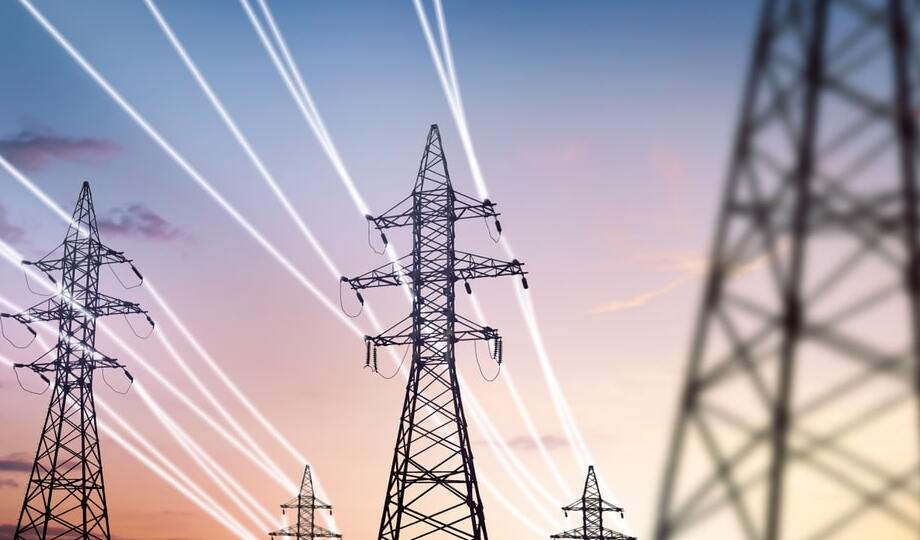
Compared to other developments of their scale, DC fast charging stations disproportionately hinge on a suitable connection to the power grid due to their extremely high power requirements.
Consider a DC fast charging installation with 10 charging stations capable of delivering up to 150 kilowatts (kW) of power. When added up, this requires a grid capacity of at least 1,500 kilowatts (kW) or 1.5 megawatts (MW) – to put that in perspective, that’s roughly the power produced by a mid-sized wind turbine.
With such power requirements, building a DC fast charging installation isn’t as easy as picking a location and plugging it into the power grid. There is considerable upfront work required involving the grid operator, site owner, and utility company to ensure the site’s grid connection is suitable.
Read more about what you should consider about a location’s grid connection for DC fast charging here
Designing a DC fast charging site
Beyond finding a location, developing successful DC fast charging sites requires a few considerations. Here are a few aspects to take into account:

- Build a long-term plan: Before building anything, consider how future demand for DC fast charging at your site might evolve. How is EV adoption projected to grow in your area? Do you have room to expand or add additional capacity easily? Future-proofing your site can save you from missing out on lucrative future business growth and help minimize expensive upgrades later down the line.
- Consider DC charging station placement: Finding a suitable site is important, but equally important is how and where within that site you install DC fast charging stations. This includes the number and type of charging stations, as well as space requirements and parking layouts.
- Understand installation requirements: DC fast charging stations will always require professional installation, but the requirements will vary depending on the model. These include the type of surface, drainage, and any clearances from buildings.
- Tailor the customer experience: Besides practical considerations, how convenient and easy-to-use your installation is directly impacted the customer experience, which can make the difference between loyal customers and one-time visitors. Consider aspects such as accessibility, shelter, and interactions with the charging stations to guarantee an optimal experience for EV drivers using your site.
- Build visibility: The best DC fast charging stations are of no use if customers can’t find them. Depending on your location, your charging stations may not be visible from a distance, making it harder for customers to navigate to. Adding signage, branding, and lighting can be an effective way to ensure your charging stations stand out.
- Develop a revenue strategy: Consider how you can make money from DC fast charging stations – both directly from charging fees and by upselling any additional services to drivers while their EVs are charging. This includes retail stores, cafés and restaurants, or carwashes.
Read more about how to identify a profitable DC fast charging location here and about how to effectively design a DC fast charging site here.
Discover more about DC fast charging business opportunities
The DC fast charging market presents lucrative opportunities for businesses seeking to tap into it, but rushing into it without consideration can leave you with an expensive stranded asset.
From investment strategies to revenue models and scouting for a location, this guide gave an overview of the key aspects of a DC fast charging installation. To learn more about the different fast charging options available for your business, take a look at our DC fast charging solutions.
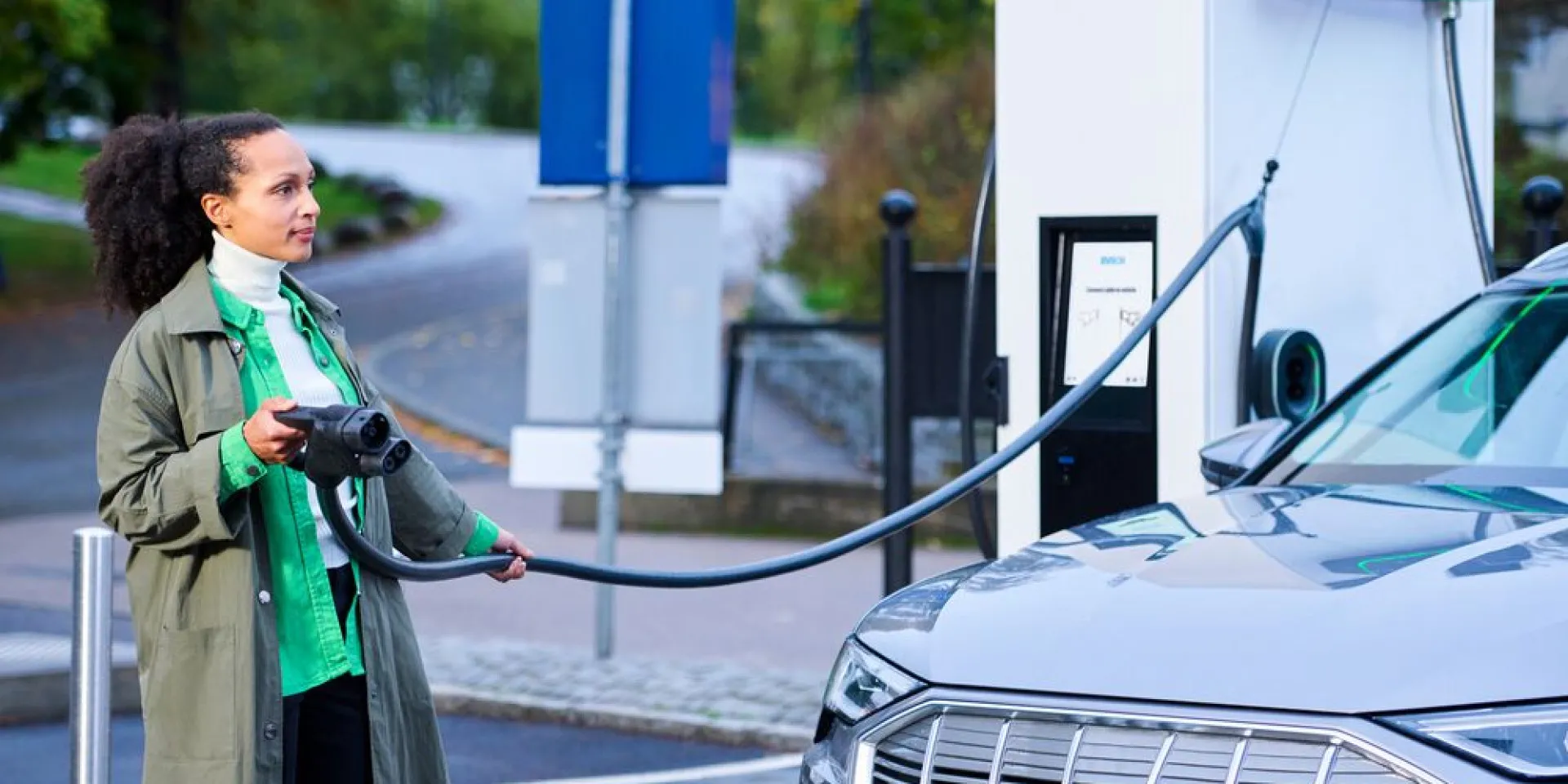

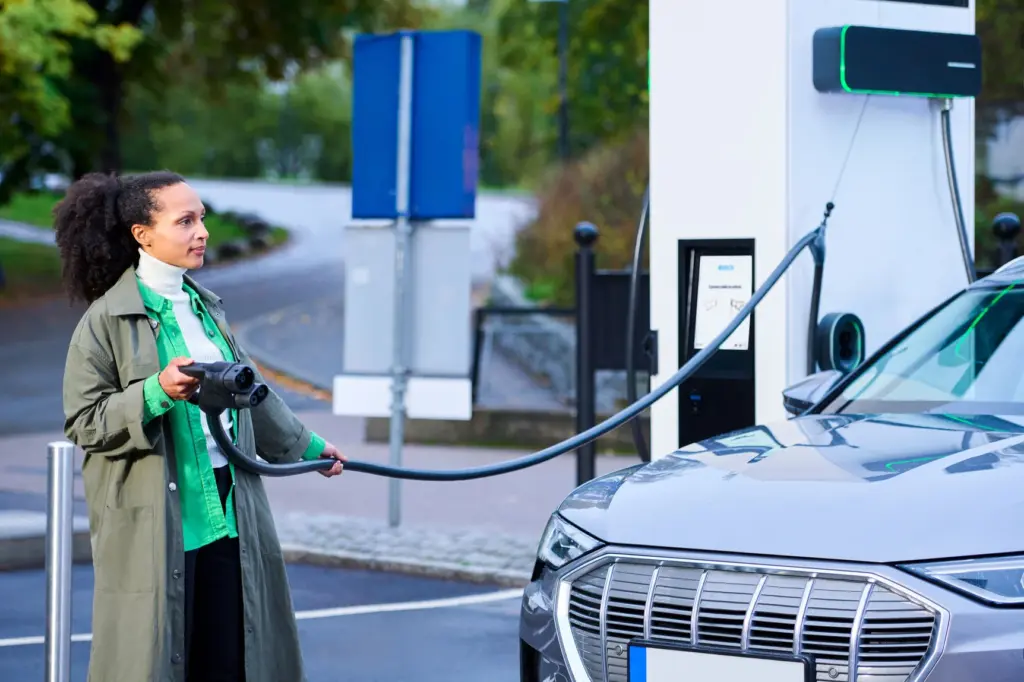
![How far can an electric car go on one charge? [May 2023 updated]](https://evbox.com/app/uploads/2025/09/shutterstock_2115845192-min.webp)